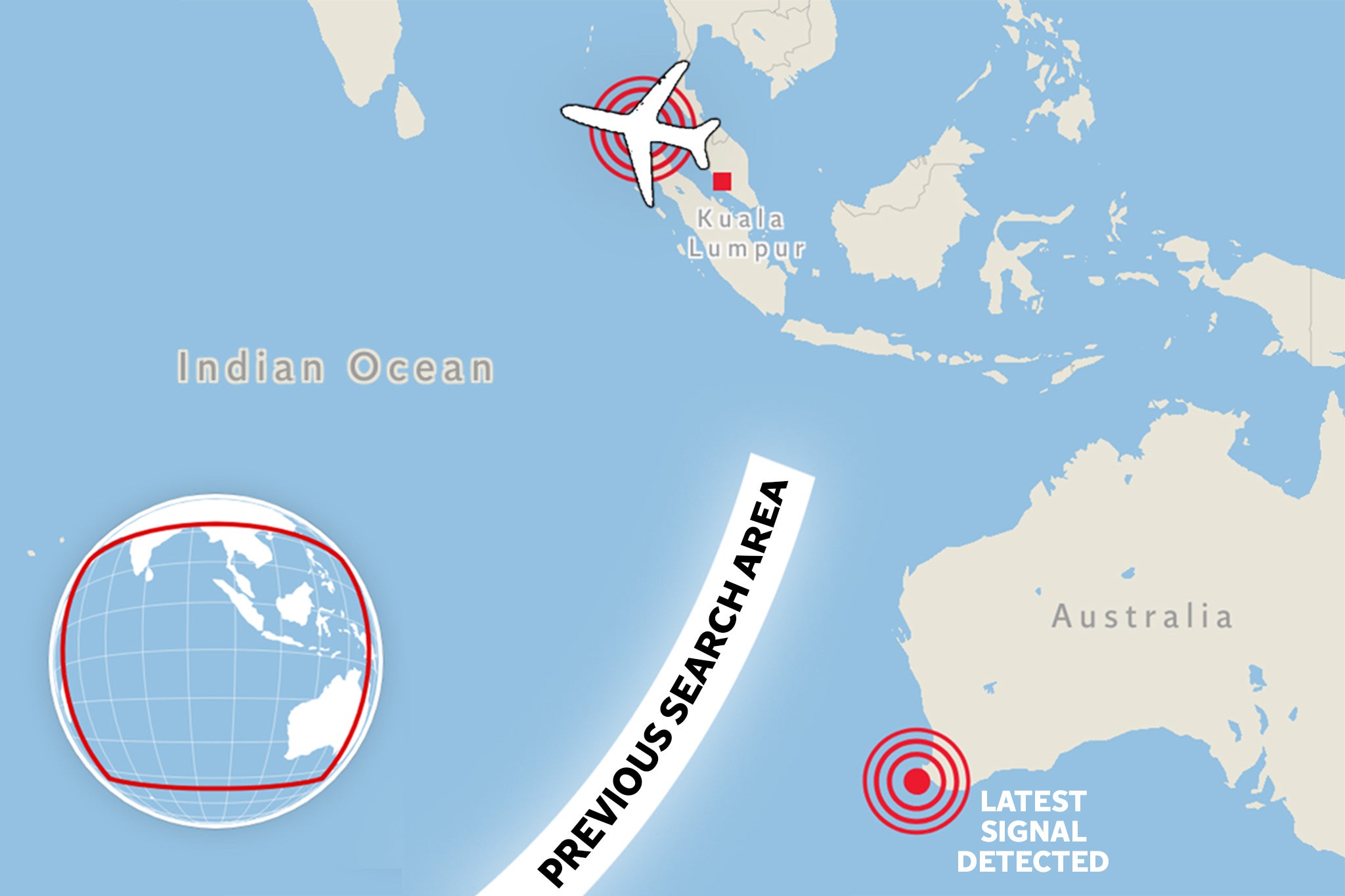MH370: Could underwater sound signals solve the mystery of missing Malaysian Airlines plane?
Cardiff University researchers hope that hydrophone data can locate the lost Malaysian Airlines jet
Your support helps us to tell the story
From reproductive rights to climate change to Big Tech, The Independent is on the ground when the story is developing. Whether it's investigating the financials of Elon Musk's pro-Trump PAC or producing our latest documentary, 'The A Word', which shines a light on the American women fighting for reproductive rights, we know how important it is to parse out the facts from the messaging.
At such a critical moment in US history, we need reporters on the ground. Your donation allows us to keep sending journalists to speak to both sides of the story.
The Independent is trusted by Americans across the entire political spectrum. And unlike many other quality news outlets, we choose not to lock Americans out of our reporting and analysis with paywalls. We believe quality journalism should be available to everyone, paid for by those who can afford it.
Your support makes all the difference.Signals from underwater microphones could be the key to finding missing Malaysian Airlines flight MH370 – a decade on from the biggest mystery in aviation history.
Since its disappearance on 8 March 2014 while travelling from Kuala Lumpur to Beijing, theories of what happened to MH370’s 239 passengers and crew have been extensively evaluated.
Now, researchers from Cardiff University believe they have identified a signal from a hydrophone (underwater microphone) from the final stage of the aircraft’s journey in the Southern Indian Ocean.

“Violent” ocean impacts, such as the crash of a Boeing 777-200 aircraft, create acoustic signatures that can travel across the water to hydrophones on the seabed.
If the flight crashed at a speed of 200 metres a second, Cardiff researchers estimate that the crash would have released as much kinetic energy as a small earthquake.
The 7th arc area of the official search zone – where MH370 is thought to have crashed – is less than 2,000km from a hydroacoustic station at Cape Leeuwin in Australia.
A weak six-second signal was recorded at Cape Leeuwin within the time frame suggested by the search, but researchers say other signals might be confirmed as related if efforts to locate the aircraft were revisited.
Another hydroacoustic station, Diego Garcia in the Indian Ocean was also operational at the time of MH370’s disappearance.
Dr Usama Kadri, a reader at Cardiff University’s School of Mathematics, said: “Our analysis shows clear pressure signals from previous aircraft crashes were detected on hydrophones, even at distances exceeding 3,000km.
“In the case of MH370, official investigations concluded the aircraft must have crashed near the 7th arc – the point at which the last communication between the plane and INMARSAT [the satellite telecommunications company] occurred.”
Following the findings, researchers have called on authorities to conduct field experiments including “controlled explosions or airguns along the 7th arc”, to monitor the impact on signals received at nearby hydroacoustic stations.
The study, published in May, referenced the 2017 search and rescue mission of the ARA San Juan navy submarine that vanished off the coast of Argentina.
Hydroacoustic technology helped to locate the vessel 3,000ft in the South Atlantic one year after it imploded using grenades to emulate the explosion and cross-referencing sounds at the time of the submarine’s disappearance.
Dr Kadri added: “Unfortunately, we’ve been unable to find a signal with the certainty needed to launch a new search for the missing aircraft.
“However, if the recommendations are followed by the appropriate authorities, we can assess the relevance of the observed signals, potentially shedding light on the location of MH370.”

Join our commenting forum
Join thought-provoking conversations, follow other Independent readers and see their replies
Comments